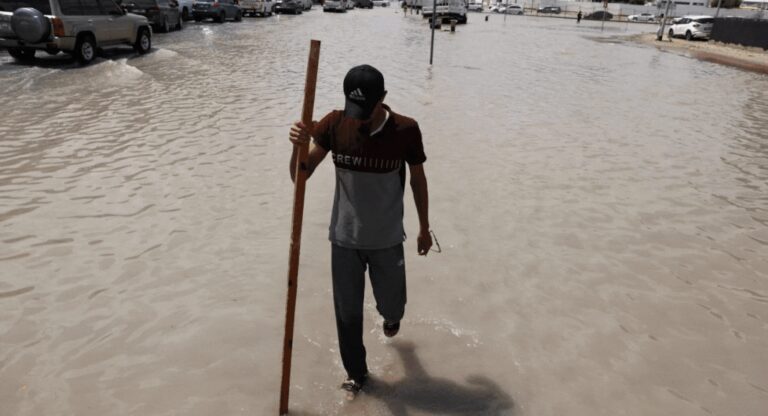
[ad_1]
The debate around modifying and controlling the weather, also referred to as geoengineering the planet, has intensified as clean technologies and cuts to greenhouse gas emissions prove insufficient to halt global warming. Those in favor argue that dealing with the climate crisis is so urgent that no option should be left out, while those opposed warn of a lack of regulation, unforeseen side effects and a delay to the energy transition.
What is cloud seeding?
Aircraft or ground generators stimulate existing clouds by injecting them with particles of salt or silver iodide, which form ice crystals that condense into rain or snow, depending on altitudes. Seeding can boost the rainfall from an individual cloud by as much as 20% under optimal conditions, according to the World Meteorological Organization.
Are the heavy rains in Dubai due to cloud seeding?
The UAE has used seeding since 2002 to address water security issues, even though the lack of drainage in many areas can cause flooding. The National Center of Meteorology said it seeded clouds April 14 to April 15 but not April 16.
An extreme rain event flooded Dubai on April 16, triggering flight cancellations, traffic disruptions and school shutdowns. Some videos on social media showed cars being swept off roads, while another showed the ceiling of a shop collapsing as water inundated one of Dubai’s most popular malls. Flight disruptions continued Wednesday at Dubai International Airport, with Emirates suspending passenger check-ins.
How effective is cloud seeding?
Cloud seeding doesn’t work out of thin air because the chemicals must be injected into existing clouds. It has proven successful when it targets rain clouds in mountainous areas — in other words, when it’s aimed at increasing rain. There is mixed scientific evidence concerning its effectiveness on clouds that may not carry rain, in flat regions and during drought, with some researchers suggesting it becomes a political tool in these situations.
Long-term seeding projects have increased the snowpack in targeted areas over the Nevada mountains in the US by about 10% a year, according to research cited by the nonprofit Desert Research Institute. Similar results have been reported in Wyoming’s Snowy Range and Sierra Madre Range, as well as in Australia’s Snowy Mountains.
What is the history of cloud seeding?
Cloud seeding was developed during the 1940s and became popular in the US during the 1950s and 1960s as farmers, hydropower companies and ski resorts benefitted from additional precipitation. But it fell out of favor over the next decades as government funding dried up following revelations the US deployed a secret military seeding program during the Vietnam War. In 1977, the US, Russia, India and some European nations signed the Environmental Modification Convention banning weather modification techniques for military purposes.
More countries are exploring cloud seeding as accelerating climate change worsens the struggle for water. It’s used in western US states and European countries including France and Spain. China uses it regularly for irrigation purposes and also to regulate rainfall in Beijing, including during the 2008 Olympics.
Is cloud seeding dangerous?
The technology’s increasing use led to the formation of a team on weather modification within the World Meteorological Organization, which warned in a 2023 report about a lack of knowledge concerning the technology’s impacts.
Other concerns include altering existing weather patterns at a local level, which can lead to undesired conditions such as hail in agriculture areas. WMO experts also warn that chemicals such as silver iodide are toxic, and their use should be monitored for health and environmental effects.
[ad_2]
